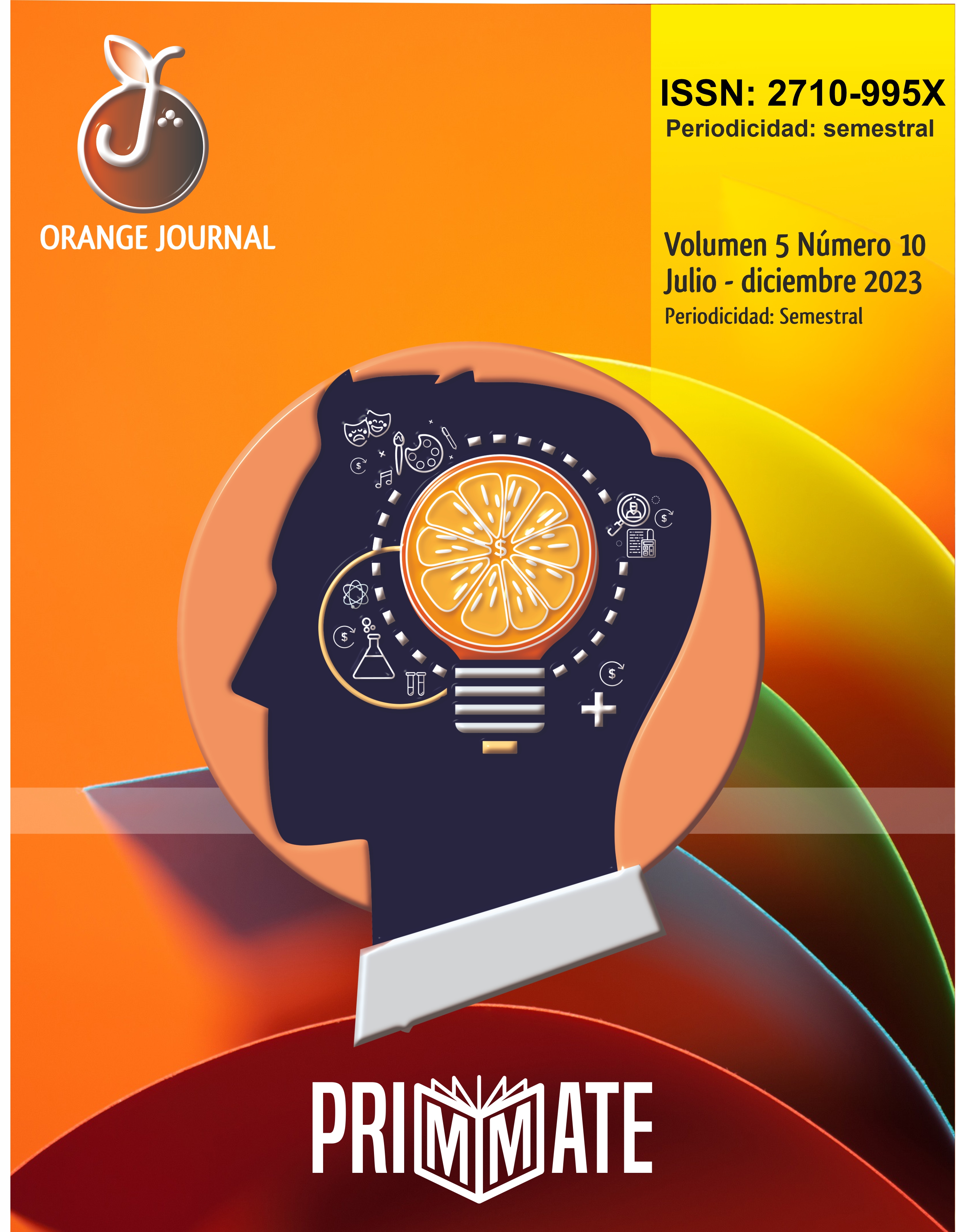Obtención y adaptación de un hibridoma productor de anticuerpos anti-C3 a medio libre de suero
DOI:
https://doi.org/10.46502/issn.2710-995X/2023.10.02Palabras clave:
Factor C3 del Sistema de Complemento, hibridoma anti-C3, medio libre de suero y proteínas, suero antiglobulínico humanoResumen
El suero de Coombs o reactivo antiglobulínico humano poliespecífico permite visualizar la presencia de anticuerpos anti-eritrocitarios incompletos o componentes del factor C3 del sistema del complemento humano adheridos a sus membranas. Es de gran importancia clínica para estudiar patologías como la enfermedad hemolítica del recién nacido, enfermedades hemolíticas autoinmunes, entre otras. Actualmente existe la necesidad de cubrir la demanda hospitalaria a través de la producción nacional. El hibridoma secretor de anticuerpos monoclonales anti-C3 generado para la producción del reactivo de Coombs debe pasar por un proceso de adaptación a medio libre de suero y proteínas debido a las desventajas que puede traer el medio que se usa tradicionalmente para su cultivo. El presente tema de investigación propone demostrar que los medios libres de suero y proteínas seleccionados son adecuados para el cultivo del hibridoma. Se realizó un estudio experimental en el Laboratorio de anticuerpos y biomodelos experimentales, de Santiago de Cuba desde abril a noviembre de 2022. Se obtuvieron linfocitos B anti-C3 a partir de la sensibilización de ratones BALB/c. Se generó un hibridoma secretor de anticuerpos anti-C3 y se evaluó su adaptación en las formulaciones preparadas a partir de los medios MB02, MB03 y MB04, todas de producción nacional por lo que proporcionan ventajas económicas. El anticuerpo monoclonal obtenido podrá ser utilizado para el desarrollo de un reactivo antiglobulínico humano poliespecífico que permitirá satisfacer la demanda hospitalaria nacional, garantizando la calidad de la atención en la salud pública y la sustitución de importaciones.
Descargas
Citas
Aragón, H., González, M., Valdés, R., Álvarez, T., Brown, E., Rodríguez, Y., ... & Wood, M. (2013). Replacement of serum supplemented medium for CB. Hep-1 hybridoma cell freezing and monoclonal antibody production. Biotecnología Aplicada, 30(1), 57-62
Borgiani, A. (2020). Adaptación del proceso de cultivo del virus rábico en células BHK con medio libre de suero (Trabajo final de carrera), Universidad ORT Uruguay. Repositorio Académico Digital: https://dspace.ort.edu.uy/handle/20.500.11968/4646
Chronopoulou, E., Uribe-Benninghoff, A., Corbett, C. R., & Berry, J. D. (2014). Hybridoma technology for the generation of rodent mAbs via classical fusion. Methods Mol Biol, 1131, 47-70.
Cruz, C., & León, G. (2007). A Simple Method for the Production of Anti-C3d Monoclonal Antibody. Hybridoma, 26(6), 433-434.
Beltran Paschoal, J. F., Patiño, S. S., Bernardino, T., Rezende, A., Lemos, M., Pereira, C. A., & Calil Jorge, S. A. (2014, October). Adaptation to serum-free culture of HEK 293T and Huh7. 0 cells. In BMC Proceedings (Vol. 8, pp. 1-1). BioMed Central.
Garzón Feria, M., Megret Despaigne, R., Aldana Laterrade, A., & Brugal Mustelier, E. (2022). Comunicación del farmacéutico comunitario desde la perspectiva del paciente crónico en Santiago de Cuba. Revista Científica Del Amazonas, 5(9), 5-13. https://doi.org/10.34069/RA/2022.9.01
GUOTIENT. (2022). Polyspecific Anti-Human Globulin Reagent BLOOD GROUPING REAGENT Rabbit Polyclonal. Murine Monoclonal Blend. United Kingdom. https://alivedx.com/wpcontent/uploads/2023/09/Z350PI_07.pdf
International Reference Reagents. (2013). Antihuman Globulin Reagent. United Kingdom. https://europepmc.org/article/MED/10516559
Hashmi, F. K., Cail, R., Islam, M., Saleem, Z., Amin, U., Hussain, K., & Saeed, H. (2014). Adaptation of WM-68 Hybridoma Cell-line in Minimal Serum and Serum Free Culture Conditions. Pakistan J. Zool., 46(2), 355-362.
Machado, N. P., Tèllez, G. A., & Castaño, J. C. (2006). Anticuerpos monoclonales: desarrollo físico y perspectivas terapéuticas. Infection, 10(3), 186-197
Palacio-Oliva, J. L., & Pérez-Yanes, R. A. (2019). Nuevas formulaciones de medios de cultivo libres de suero para el incremento de la productividad de la línea celular recombinante Her-1. Revista Cubana de Ciencias Biológicas, 7(2), 1-5.
Pérez-Bernal, M., Valdivia, O., Blanco, R., Pérez, J., Domínguez, A., Basabe, L., & Cabrera, Y. (2021). Murine Monoclonal Antibodies against the Antimicrobial Peptide Oreoch-2 from Tilapia (Oreochromis niloticus). International Journal of Scientific Research in Biological Sciences, 8(1), 32-35.
Rapid Labs. (2020). Anti-human globulin (rabbit) polyspecific anti-IgG and C3d directions for use, AHG for Antiglobulin Techniques. United Kingdom. https://acortar.link/YWfqCq
Rivera-Rivera, K. A. (2019). Evaluación comparativa del crecimiento de la línea celular BHK 21 en un medio suplementado con suero bovino adulto y otro medio libre de suero. (Trabajo final de carrera), Universidad de La Salle, Bogotá. Repositorio de tesis de la Universidad de La Salle https://ciencia.lasalle.edu.co/biologia/54
Rodríguez Leyva, R., Menéndez Corona, J., Silveira Sánchez, E., & Paneque Tamayo, D. (2010). "Producción de suero de Coombs en carneros inmunizados con globulinas humana opsonizadas." Rev Cubana Hematol Inmunol Hemoter, 26(3), 228-235.
Ruiz, G. (2007). Anticuerpos monoclonales terapéuticos. Informe de Vigilancia Tecnológica. Editorial: Genoma España
Simancas-Escorcia, V., & Diaz-Caballero, A. (2019). Impacto de la concentración de suero fetal bovino sobre las células epiteliales dentales. Entramado, 15(1), 276-284.
Spinreact. (2017). Anti human globulin (coombs). C. S. Coloma. España. https://acortar.link/lWRaAl
Theis, S. R., & Hashmi, M. F. (2020). Coombs Test. National Library of Medicine. https://www.ncbi.nlm.nih.gov/books/NBK547707/
Van der Valk, J., Brunner, D., De Smet, K., Svenningsen, Å. F., Honegger, P., Knudsen, L. E., ... & Gstraunthaler, G. (2010). Optimization of chemically defined cell culture media–replacing fetal bovine serum in mammalian in vitro methods. Toxicology in vitro, 24(4), 1053-1063.
Yokoyama, W. M., Christensen, M., Santos, G. D., Miller, D., Ho, J., Wu, T., ... & Neethling, F. A. (2013). Production of monoclonal antibodies. Current protocols in immunology, 102(1), 2-5.
Publicado
Cómo citar
Número
Sección
Licencia
Derechos de autor 2023 Claudia Camila García Cruz, Gabriel Llauradó Maury, Humberto J. Morris Quevedo, Alejandro Miranda Ariza, Elizabet Galindo Arias, Suyén Rodríguez Pérez

Esta obra está bajo una licencia internacional Creative Commons Atribución 4.0.










